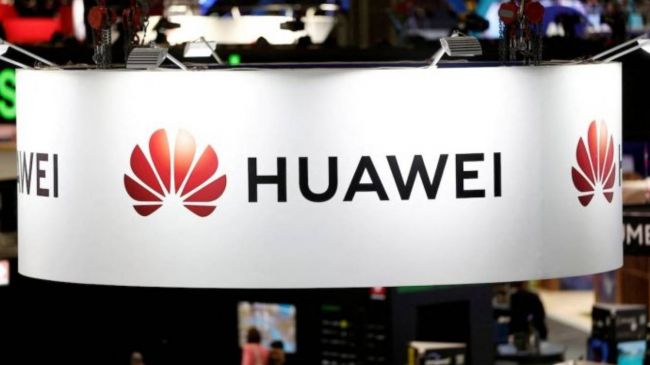E-commerce is set to transform more radically in 2025 than it has in the past decade. What began as a convenience has evolved into an entire digital ecosystem, reshaped by AI, consumer behavior, and emerging technologies. As more platforms decentralize, personalization reaches new levels, and data becomes the most critical asset, the strategies that defined 2020s online retail are already outdated.
In this article, we dive into the most impactful trend driving e-commerce in 2025: hyper-personalized, platform-driven commerce built around actionable data. We spoke with four leading industry experts, each representing a different facet of e-commerce, to get their take on where the market is heading and how businesses can stay ahead.
Hyper-personalization is the New Standard:

Consumers no longer respond to generalized marketing. Instead, they expect experiences tailored to their preferences, behaviors, and past purchases. The rise of AI and real-time analytics allows platforms to customize product offerings, emails, and even pricing on an individual level.
Noam Friedman, CMO of Tradeit, emphasizes how personalization is now a baseline expectation:
“In 2025, personalization is no longer a differentiator—it’s table stakes. Our data shows that conversion rates increase by over 30% when customers are served personalized product recommendations based on real-time behavior, not just historical data. The future of e-commerce will be shaped by those who can create dynamic, responsive shopping experiences.”
Key personalization tools now include:
- Predictive analytics to anticipate customer needs before they express them
- AI-driven merchandising that adapts store layouts per visitor
- Real-time chatbots with emotional recognition features
- Dynamic pricing engines that adjust based on customer behavior and inventory levels
Companies investing in first-party data collection strategies—like loyalty programs, interactive quizzes, or account-based browsing—are already outpacing those relying solely on cookies or basic segmentation.
Multi-platform Selling is Redefining Brand Strategy:
Gone are the days when a single Shopify or Magento store was enough. Brands in 2025 must show up where their customers already are—social media marketplaces, niche third-party platforms, livestreams, and even within gaming environments.
Steve Morris, Founder & CEO of NEWMEDIA, sees this shift as a major opportunity:
“The lines between entertainment and e-commerce are blurring fast. Successful brands are those that treat each platform not just as a sales channel, but as a unique ecosystem with its own native culture. In 2025, your brand needs to live and breathe differently on TikTok Shop, Meta Marketplace, and your DTC website. Omnichannel is no longer about presence—it’s about platform fluency.”
Platform selling is being accelerated by:
- TikTok Shop, which is expected to process over $15 billion in transactions globally in 2025
- Amazon’s ecosystem, which is expanding into AI-powered virtual showrooms
- Meta’s unified commerce tools, bridging Instagram and Facebook into a seamless shopping loop
- YouTube’s affiliate and storefront integrations, allowing creators to serve as direct sellers
The strategic play is to tailor messaging and product placement for each platform. Brands that succeed understand that a product video that works on TikTok won't resonate the same on YouTube Shorts.
Small Brands are Winning with Micro-Niche Strategies:
One unexpected twist in 2025’s e-commerce evolution is the dominance of micro-niche players. These brands build cult-like followings by serving hyper-targeted communities and leaning into authenticity and personalization.
Alan Chen, President & CEO of DataNumen, explains how niche players are capturing market share once dominated by mass-market giants:
“We’ve seen exponential growth by focusing on micro-communities—whether that’s schools, esports teams, or indie creators. E-commerce in 2025 is about being the best in your niche, not the biggest overall. Our ability to customize products at scale, coupled with content made for our customers instead of at them, has completely transformed our trajectory.”
The rise of micro-niche commerce is being supported by:
- On-demand manufacturing and print-on-demand tools
- Community-led marketing through Discord, Reddit, and niche forums
- Collaborative creator commerce, where brands co-develop products with influencers
- Ethical transparency, with buyers prioritizing local, sustainable, and independent businesses
Consumer loyalty is shifting. Shoppers prefer personalized products and are more willing to support brands aligned with their values—even if it means paying more or waiting longer for delivery.
Data Ownership and Ethical Analytics Take Center Stage:
Data ownership has emerged as a critical battleground as third-party cookies disappear and regulations like GDPR and CCPA expand globally. Brands that establish ethical, first-party data pipelines will stay compliant and unlock deeper insights into customer behavior.
Richard McKay, CEO & Managing Director of Sprung Gym Flooring, highlights how ethical data strategies are giving agile brands a decisive advantage:
“We realized early on that the future of e-commerce lies in owning your data. We don’t just track transactions—we study every interaction, from how customers navigate our product pages to what blog content drives action. Transparency and value exchange are key. Customers are willing to share data if they know it's improving their experience.”
In 2025, successful data strategies involve:
- Zero-party data collection through opt-in quizzes, surveys, and polls
- Behavioral heatmaps and scroll tracking to refine UX/UI
- AI-powered customer journey mapping across multiple touchpoints
- Data transparency dashboards that show customers how their data is used
More businesses are also using blockchain-based data tokens that let consumers retain control of their personal information, choosing what to share and with whom.
Key Technologies Shaping the Market:
Aside from the trends above, several technologies are becoming critical to e-commerce success:
- AI-powered search and voice commerce: Shoppers are relying on voice assistants and smart searches to navigate catalogs.
- Augmented Reality (AR): Customers now “try on” products virtually—whether furniture, fashion, or fitness gear.
- Subscription 2.0 models: These go beyond monthly deliveries, integrating curated content, exclusive access, and digital communities.
What’s important is that these technologies are no longer optional—they’re expected by the average consumer. The difference between a brand that thrives and one that fades often lies in how intuitively it incorporates tech into the buying journey.
Top Strategic Priorities for E-Commerce Leaders in 2025:
Based on expert insights and current industry data, here are the top priorities for e-commerce leaders this year:
- Invest in AI and personalization tools that respond in real time.
- Build multi-platform selling strategies, tailored to each channel’s audience.
- Double down on ethical data collection and transparency.
- Develop micro-niche brand communities through targeted content and custom offerings.
- Utilize immersive tech like AR and voice AI to remove buyer hesitation.
Conclusion: E-Commerce in 2025 Is No Longer About Selling—It’s About Belonging
The future of e-commerce is more than just streamlined checkouts and product availability. It’s about creating spaces where customers feel seen, understood, and valued. From custom experiences to ethically sourced data strategies, brands are learning that personalization, community, and relevance are the real currencies of this new digital economy.
As our four experts make clear, success in 2025 requires both smart technology and deeper human connection. Whether you are a startup or an enterprise, now is the time to reinvent your digital presence—not just as a store, but as a personalized ecosystem that adapts to your customers in real time.
If e-commerce in the past was about convenience, in 2025 it is about context.
Post Comment
Be the first to post comment!





